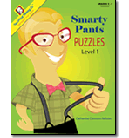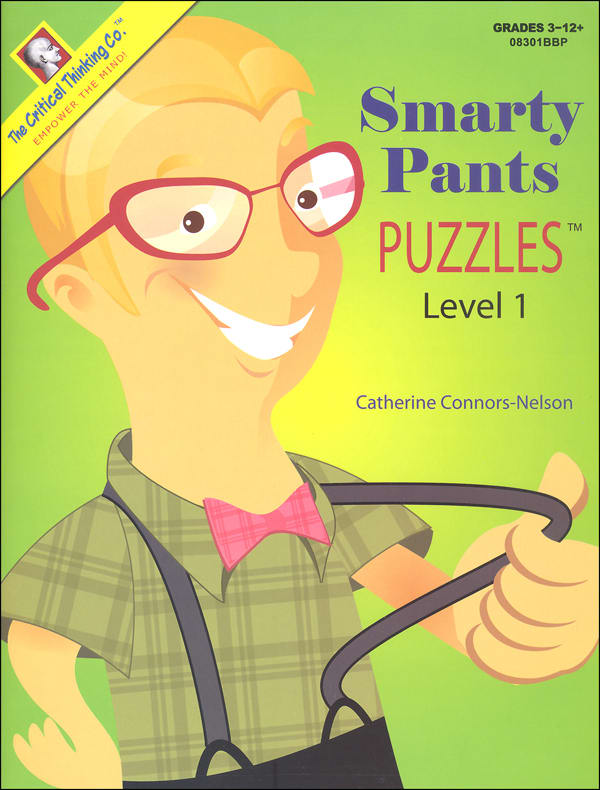I hope that the new Smarty Pants Puzzles™ Level 1 is only the first of a series of activity books since it’s great for both critical thinking and reading comprehension. As of the summer of 2013, Level 1 is available as a reproducible book and will soon be available as software. The publisher generously grants permission to reproduce up to 35 copies per year of puzzles in the print book for one home or classroom.
Smarty Pants is divided into two parts. In the first part, puzzles involve deductive logic, while inductive logic is used with puzzles in the second part. At the beginning of each part, a sample puzzle with answers and explanations helps students understand thinking strategies for solving each type of puzzle.
Even though puzzle solving strategies differ, the format for both types of puzzles is essentially the same. Students read a short passage that might be about a fictional event or a topic such as “Life on Other Planets.” Each sentence in the reading passage is numbered like Bible verses. A picture accompanies each reading passage, and there is a caption under each picture.
Brief instructions are repeated for each puzzle. Instructions are followed by five or six statements. In the first part, students first write “T,” “F,” or “U” for true, false, and unknown regarding each statement. They can use the reading passage, the picture, and/or the caption to obtain information. They often need to make inferences. If students get their information from the reading passage, they mark down the number(s) of the sentence(s) in the reading passage that provide the best evidence for their answer. They might also check the box for the picture or the caption if these were the source of information. (Note: The new PARCC tests associated with the Common Core will almost certainly have test items that ask students to identify the source of information within reading passages as do these exercises in Smarty Pants Puzzles.)
In the second part, rather than identifying statements as true, false, or unknown, students select from five options listed in their instructions. Options include true and false as well as “This is probably true but might be false,” “This is probably false but might be true,” and “None of the above. There is not enough evidence.”
An answer key at the back includes answers for all of the puzzles plus explanations for most of the answers.
Smarty Pants Puzzles is suggested for third graders through adults. That sounds like a big stretch, but it is appropriate since the passages rely on careful reading and critical thinking rather than prior knowledge. However, younger students will certainly need more help to learn how to identify ambiguous information. I think homeschooling families might even enjoy working on these puzzles together as a family, discussing possible answers until they reach a point of agreement.
Smarty Pants should be a great way to introduce critical thinking as a supplement to your homeschooling.









